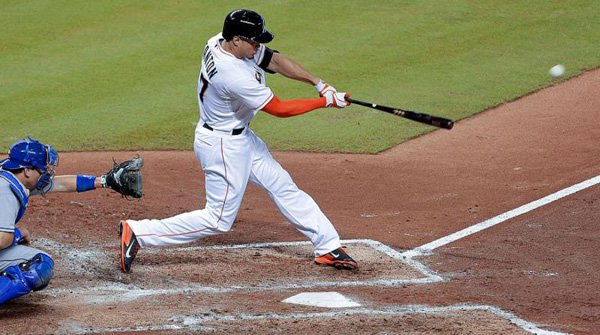bunt coverage
Question
How should a team cover a bunt with a runner on 3rd.
Answer
Donnie: Thank you for your question.
In a situation where you have only a runner at third, there are two types of bunts the offense could use.
Whether or not your league allows leadoffs for base runners, the pitcher should throw from the stretch, as it takes less time to get the ball to the plate. He is also able to watch the runner and determine if he is running on the pitch.
1. Squeeze ~ With this bunt, the runner is going on the pitcher's motion to the plate, as he would if trying to steal home. The batter's responsibility is to bunt the ball on the ground, and is bunting whatever you throw him.
Defense: As the runner breaks for the plate, the third baseman yells to alert the rest of the infield of the squeeze and breaks hard towards home plate with the runner, responsible for balls bunted up the third base side.
The shortstop comes to third, in the event the squeeze turns into a rundown situation, so you have someone on third base.
The second baseman goes to first base.
The first baseman crashes like the third baseman, and is responsible for balls bunted up the first base side.
The pitcher is responsible for the bunt in front of him. His most important job is the location of the pitch.
You want to deliver a pitch that will be difficult to bunt, yet the catcher can handle and make the tag if the ball is not bunted. I personally like a fastball, down and in to a right handed batter, down and away to a lefty. That pitch puts your catcher in a great position for a tag, and requires the batter to go from the top of the strike zone to below the strike zone with his bat.
Often younger players will drop just their bat barrel to get to the pitch, bunting the ball up in the air, creating a possible double play situation.
Some coaches like to throw the ball up above the strike zone. The concern there is the difficulty it creates for the catcher. It is a hard pitch to bunt, but the catcher has to go a long way to get it.
As players get older, many teams will have the catcher stand up as soon as they are alerted to the runner, which alerts the pitcher to go high with the pitch. Takes some advanced experience with the game to get the hang of that, for both the pitcher and the catcher.
The catcher is responsible for the tag at home, if the ball is bunted he either is fielding it, depending on where the bunt goes, or calling out where the play is to go.
The left fielder is coming hard towards the third base line and in towards the base, to backup in the event of a rundown.
The center fielder is coming hard to second base, in case the play goes to first and there is a bad throw, starting the batter toward second.
The right fielder is going towards the first base line and up towards the base, as much in line with the throw as he can.
2. Safety squeeze ~ With a safety squeeze, the runner is taking his secondary lead and reading the bunt. The batter is bunting only strikes, looking to bunt the ball up either side, away from the pitcher. If he is successful with that, the runner will break for the plate when he sees the ball is headed for the ground.
Defense: When the batter squares to bunt, the third baseman crashes and has responsibility for the third base side.
The shortstop comes to third, same reasons as the first scenario.
The second baseman goes to first base.
The first baseman crashes as the batter squares and is responsible for the first base side.
The pitcher delivers the pitch, and is responsible for the area in front of the mound.
The catcher is responsible for the bunt in front of the plate, or making the call as to where the play is going.
Everyone coming towards the bunt is responsible to take a look at the runner on third to hold him if possible, then throw to first to get the runner.
If the runner is coming and they have a play, throw to the plate. If not, first base. You need to get an out somewhere in this situation.
Outfielders all have the same responsibility as the first scenario.
As you can tell, everyone has somewhere they need to be. If they find themselves with nowhere to go, they are wrong. Getting outfielders to back up bases in a timely manner is always a challenge; but worth the effort. It may not happen often, but when it does they need to be there.
I hope this helps you deal with the bunt situation and a runner on third. The secret to bunt defense, in all cases, is decisiveness on the part of the defensive team. That comes from repetitions and dealing with all that can occur in a practice setting, before it happens to them in a game. LUCK IS WHEN PREPARATION MEETS OPPORTUNITY!
Decisiveness creates confidence, and confidence is the building block for baseball players, at all levels.
Good luck! It is a great game.
Yours in baseball,
Rick
Umpire Interference (Dead Ball)
batting swing


